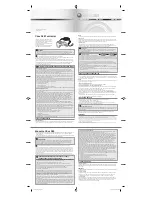
USA MAV500/MKVI Service Manual
Coin Chute Assembly
28-00486-00
6-7
This document contains confidential information which is proprietary to ATI. It may not be disclosed to any unauthorized parties,
and it may not be copied. All rights reserved.
© Copyright (ATI) Aristocrat Technologies, Inc. 2002.
When a coin enters the sensor assembly, it hits a weighted lever which slows down
the passage of the coin. Weights on the lever can be changed to suit the coin
denomination.
The coin then passes the scanner unit (see Figure 6-3), which contains three sensor
coils, L1, L2 and L3. L1 and L3 are driven by the PCBA to create a magnetic field.
The central coil, L2, is a pick-up coil used to monitor the magnetic field. The sample
coin sits between L1 and L2 and disturbs the magnetic field. When a coin that is
identical to the sample coin passes between L2 and L3, it disturbs the magnetic field
in exactly the same way as the sample coin. The result is a momentary null field in
the middle. This null is detected by the comparator and registered as a valid coin.
L1
L2
L3
Sample Coin
Oscillator
Pick-Up Coil
Player's
Coin
MC-62 Coin Comparator
Null Field
when identical
coins are in line
Mc62_01
Figure 6-3 MC-62 Sensor Coil Arrangement
When the comparator registers a valid coin, it sends a CSENSE signal to the Driver
Board and activates the coin accept solenoid. This solenoid is attached to a gate that
opens when the solenoid is activated, allowing the valid coin to fall directly into the
accept chute.
As the coin exits the sensor assembly, it passes through the internal photo-optic
sensor. This sensor consists of two emitter/detector pairs that allow the MC-62
comparator to detect the speed and direction of the passing coin.
If the coin is travelling in the wrong direction or is travelling too slow, then a
CERROR signal is sent to the Driver Board and the machine locks up. The CERROR
pulse indicates a coin reverse or coin blockage condition depending on the length of
the pulse. The lockup condition will be either a coin reverse, coin acceptor fault, or
coin optic fault.
If the coin passes normally then a CCREDIT signal is sent to the Driver Board.
When the machine is paying out, the Main Board sends the signal NECOINBLK to
disable the coin comparator. If any coins are inserted in the coin entry during this
time, the comparator directs them to the reject chute.
















































